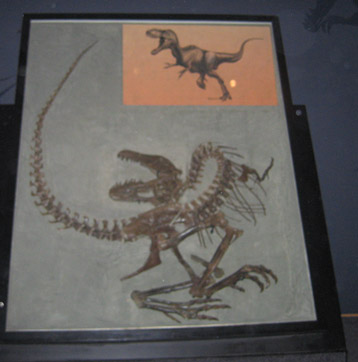Looking at the North Laramidian Tyrannosaur Albertosaurus
Despite their frequent appearance in monster movies the Tyrannosauridae are perhaps not as well known as many people might think, especially when they are faced with the overwhelming number of tyrannosaur exhibits on display at Natural History museums. Expect the BBC and 20th Century Fox to portray a member of the tyrannosaurid family as the villain in a forthcoming film. The reality is, even the mighty Tyrannosaurus rex has provided less than forty fossil specimens for palaeontologists to study and the vast majority of these are far from complete. The popularity of these fierce carnivores is easy to understand, they were certainly impressive beasts but scientists still have a great deal to learn about these animals, their ancestry, social behaviour and morphology.
Long-limbed Tyrannosaurs
The likes of Tyrannosaurus rex is synonymous with the Hell Creek Formation of Montana in the north-western United States. The exposed strata of sandstone, siltstone and mudstone represent sediment laid down towards the very end of the Cretaceous (Maastrichtian faunal stage). It was from these beds that the first T. rex fossils were unearthed. However, a greater number of Tyrannosauridae fossils have been recovered from Canada, specifically areas such as the Dinosaur Provincial Park Formation in Alberta.
The extensive outcrops of Campanian faunal stage strata from deposits termed the Belly River Group and the Judith River Formation have been dated to approximately seventy-five million years ago. The theropod fossils recovered from these sites along with other body and trace fossils have enabled palaeontologists to build up a detailed picture of the eco-system that existed in this area at the end of the Cretaceous. This has led to some speculation as to the hunting habits and specialisation of the tyrannosaurs in this faunal community.
The Albertosaurinae and the Tyrannosaurinae
Late Cretaceous tyrannosaurids of Alberta can be grouped into two sub-families, the Albertosaurinae and the Tyrannosaurinae (work from Phil Currie et al). The albertosaurines from the Dinosaur Provincial Park can be split into two genera, Albertosaurus and Gorgosaurus), the Tyrannosaurinae are represented by Daspletosaurus. In the 1970s the genus Gorgosaurus was dropped and it was synonymised with Albertosaurus, following a review of existing specimens where no significant characteristics were identified, permitting both genera to be valid. This viewpoint was overturned in 2003 when following a study by a Canadian led team looking at fossils recovered after the review in the early 1970s, a number of differences were identified between Gorgosaurus and Albertosaurus and so both taxa were validated.
Gorgosaurus was reinstated.
The Death Pose of a Canadian Tyrannosaur (Albertosaurus)
Picture credit: Everything Dinosaur
The picture shows an almost complete and articulated restoration of an Albertosaurus specimen on display at the Royal Tyrrell museum (Canada). The neck and head presented in a curved position over the back and hips is typical of articulated Dinosauria fossils, this effect is believed to occur as ligaments and tendons are desiccated in the carcase and their drying out leads to the head and neck curving over the back of the animal.
Different Hunting Strategies
The albertosaurs shared their Late Cretaceous world with the likes of Daspletosaurus, (Daspletosaurus means “frightful lizard”). Both these types of tyrannosaur were predators and likely to have been at the top of the food chain, however, examination of their fossils reveals that they may have specialised in different hunting strategies and prey.
Albertosaurs had slightly shorter, lower skulls than many other tyrannosaurs. Their leg bones, especially the tibia (shin bone) were proportionately longer than equivalent sized tyrannosaurs. They had longer toes and although the weight of an adult Albertosaurus (A. sarcophagus), has been estimated at 2,500 kilograms, these animals were lighter than equivalent sized Tyrannosaurinae.
In recent years, scientists have concluded that there were two distinct clades of tyrannosaur in North America during the Late Cretaceous inhabiting the land mass known as Laramidia. The first clade, from the north (Canada) featured long-snouted forms such as Albertosaurus. The southern Laramidia group, the group that was to give rise to the most famous tyrannosaur of them all – T. rex (Utah, Montana, Wyoming etc). had more square, broader, box-like skulls. Scientists remain uncertain how these distinctions evolved.
Everything Dinosaur stocks a wide range of tyrannosaur models including several North American genera. To view the extensive range of dinosaur models in stock: Tyrannosaur and Other Dinosaur Models.







Leave A Comment